|


| |
 I came to Trinity College this year to work on my final year project. The
title is "Advanced Ray Tracing Techniques for Realistic Image Synthesis" and,
although the project demonstration has already taken place and the report has been
submited, it's a project that hopefully will never end. I say "hopefully" since
it's a very interesting project, whose name should be "Once you pop, you can't
stop". I came to Trinity College this year to work on my final year project. The
title is "Advanced Ray Tracing Techniques for Realistic Image Synthesis" and,
although the project demonstration has already taken place and the report has been
submited, it's a project that hopefully will never end. I say "hopefully" since
it's a very interesting project, whose name should be "Once you pop, you can't
stop".
For those who know nothing about ray tracing or realistic image synthesis,
the aim of this project is to generate realistic images, as they would appear to our eyes
or to a camera, from a description of a scene (i.e., a description of the objects
(positions, geometries and materials), the lights and the camera) that does not need to
exist in the real world.
I can't explain all the project here, so I will just put some of the
images that have been generated. I hope you like them!. All the images have a full-size
version, that you can see clicking on them
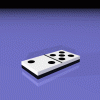
|
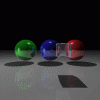
|
Ray traced images: some of the first
images generated by the program. Note that CSG (constructive solid geometry) is used for
constructing objects. The images are hyperrealistic: the reflections and the shadows are
too perfect to be real. |
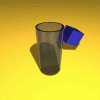
|
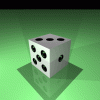
|

|
CSG: We can construct complexs objects defining
them as the union, intersection or difference of simpler objects. |

|
Textures: We can use textures for modelling
low-level detail withouth low-level description. Here we have marble, checkboard and image
textures. |
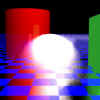
|
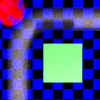
|
Describing movement: the objects in the scenes can
move; when photographied a blurry trail should appear (motion blur). We allow to describe
complex object movements using and concatenating time transformations. |
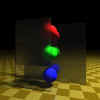
|
Glossy reflection and transmission: real-world
objects usually don't reflect or transmit light perfectly. Glossy reflections and
translucency (glossy transmission) can be reproduced by the program. |
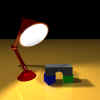
|
CSG Luxo (Soft shadows): an example of complexs
objects built using CSG. Soft shadows (instead of hard-edged shadows, typical of ray
tracing) increase dramatically the realism of the images. |
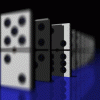
|
Depth of field: real camera (and our eyes) have a
finite aperture and depth-of-field; objects too near or too far from the focal plane
appear out of focus. A thin lens camera model can reproduce this efect. In this
image the camera is focused on the 2:6 domino. |
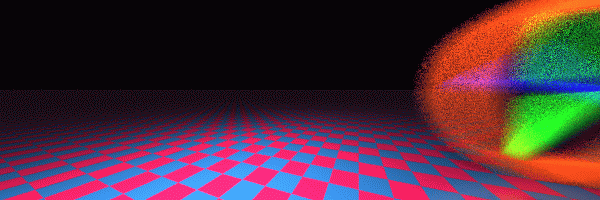
|
Motion Blur for animations: the use of motion
blur can be very useful to obtain smooth animations of objects moving very fast.
Click to see an animation. |

|

|
Caustics: light coming from light sources on
points that can not directly "see" the light source is usually ignored in ray
tracing. But then the phenomenon of caustics is not reproduced. |
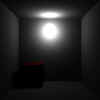
|
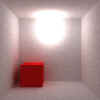
|
Interdiffuse reflections and colour bleeding:
light diffusely coming from other objects is also usually forgotten in ray tracing. As a
result, closed enviroments appear too dark, and colour bleeding phenomena are not
reproduced |
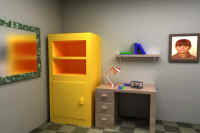 |
The Room Scene: the most complex scene
rendered by the program, with 100 objects and all kind of materials and textures. Note the
colour bleeding of the books and the cupboard, the shiny lamp and table, the motion blur
of the ball, the glossy mirror... The image below is a close-up of the table, and uses the
Thin Lens camera model, so the picture and the blocks appear out of focus. |
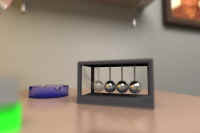 |
|